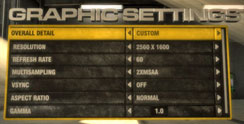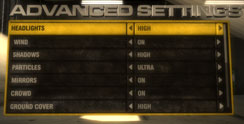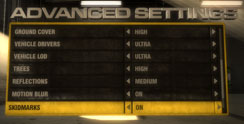Radeon HD 4890 vs GeForce GTX 275
April 3, 2009 | 16:03

Race Driver: GRID
Publisher: CodemastersRace Driver: GRID is one of the best racing games to grace the PC in some time, striking a fine balance between automotive simulation and arcade throttle-fest which has resulted in an enormously entertaining game. Players can choose from racing tuned saloons through city streets, through to driving Lamborghinis around Le Mans, with all cars displaying a highly detailed damage model.
GRID runs on a modified version of Codemasters' own in house Neon engine, rechristened Ego for GRID. This will also be the engine used in the highly anticipated Operation Flashpoint 2: Dragon Rising, so hopefully GRID will give us a good indication of how hardware will perform in this future title too. Despite only supporting DirectX 9.0c, GRID features a lot of high level graphical features, including motion blur, fantastic smoke effects, dynamic track side details and thousands of fully 3D spectators.
To test performance in GRID, we raced a lap of the "San Francisco Short Circuit" track in the RADT Nissan Skyline Z-tune, starting from the back of the grid to ensure as many cars on screen for as long as possible. We chose the San Francisco circuit due to the large amount of dynamic track side details like flags and spectators visible from the track, and for the close proximity of track side objects.
However, GRID does not support anisotropic filtering in game, so we had to force this to 16x using the Forceware and Catalyst drivers. We captured the average and minimum frame rates during the lap, and the results you see below are indicative of around one minute and forty seconds of gameplay (average lap time) per setting.
GRID is still an excellent game, with some big crashes and frantic racing on offer as well as appealing visuals. The game slightly favoured the ATI hardware at every resolution and level of AA, but only by a few fps at the very most. At 1,680 x 1,050 with 4x AA the Radeon HD 4890 ran the game at a minimum of 72fps and an average of 91.8fps while the GeForce GTX 275 achieved a 69fps minimum and a 89.4fps average.
Both the HD 4890 and the GTX 275 were capable of playing the game at 2,560 x 1,600 with 4x AA, and the performance difference is marginal, so you're not losing anything in GRID by choosing one card over the other. At this resolution, the GTX 275 equals the GTX 285 for speed, while the HD 4890 beats it. If there was any doubt that GTX 285 is poor value for money before, this and the last few pages should have proved it.

MSI MPG Velox 100R Chassis Review
October 14 2021 | 15:04











Want to comment? Please log in.